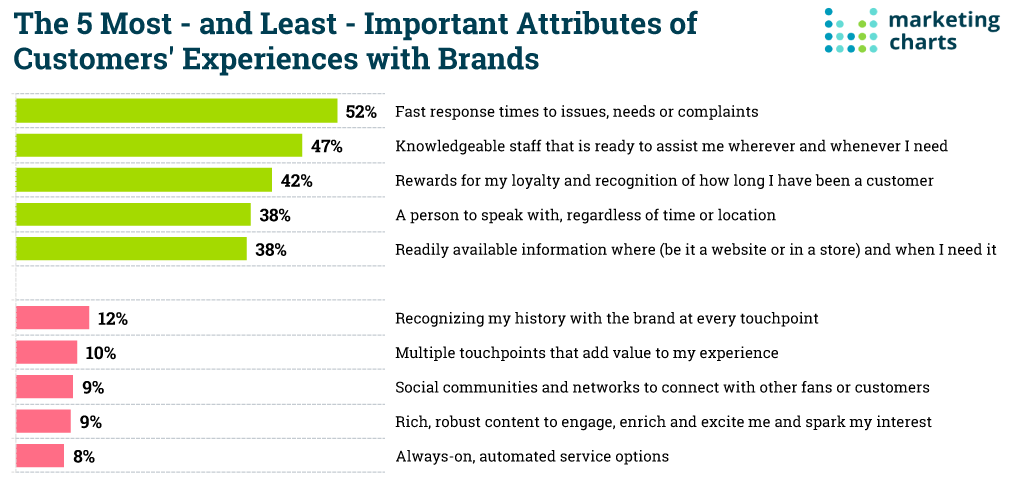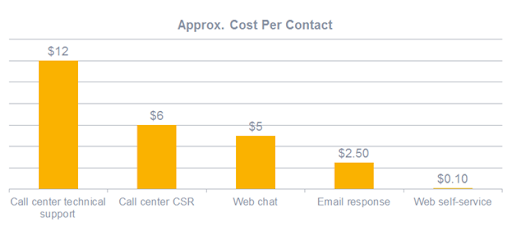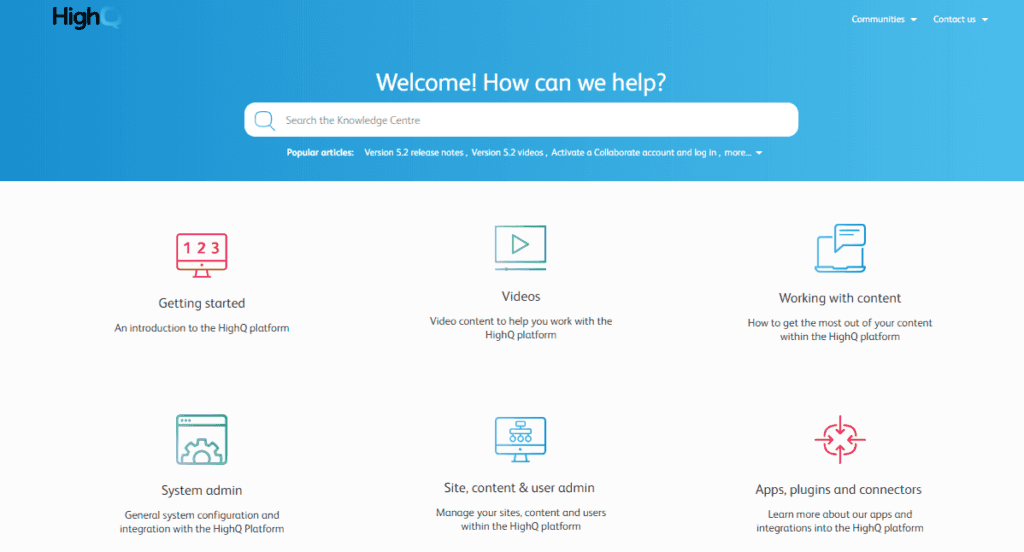The face of customer support is changing fast. Now more than ever before, self-service has become the new way of serving customers.
Unlike decades ago, when people relied on support teams to resolve their issues, customers today are increasingly opting for the DIY (Do It Yourself) approach to get information. Calling the support staff is slowly becoming the last option that customers want to go for, in case nothing works.
This is because today’s tech-savvy customers want everything in a blink. As a matter of fact, statistics show that most customers consider the fast response time as one of the most important aspects of excellent customer experience.

This shift in customer behavior means that businesses must focus on empowering customers to self-serve effectively. But self-service is not just beneficial to customers. From a budget standpoint, it makes sense for large as well as small firms.
Visualize an eCommerce firm that serves thousands of people around the world. Having the support team to offer individualized support to every customer would be labor-intensive and extremely expensive.
On the contrary, if the self-help approach is adopted, it can save be significantly cost-saving, as shown in the figure below:
 Source: Agentisenergy
Source: Agentisenergy
An article published in the Harvard Business Review acknowledges that irrespective of the form it takes, self-service allows businesses to help huge numbers of customers at a significantly low cost. As per HBR, the cost of a self-help transaction is in pennies as compared to other transactions done via email or phone.
Cost-saving is just one reason why the concept of self-support is creating ripples across the global business landscape. Before going into detail, let’s first look at what precisely self-service customer support is.
Defining Self-Service Customer Support
Self-service is not an entirely new phenomenon in the business world. The idea was developed more than a century ago when Clarence Saunders was recognized for Piggly Wiggly, a grocery store that integrated self-help where customers would pick the items they wanted off the shelf.
A century down the line, supermarkets are still thriving on this model. So what is self-service customer support?
Self-service refers to a type of customer service where customers can explore solutions to their problems on their own, without reaching out to support staff of a firm. With customer self-service, businesses are able to provide their customers with what they seek the most – instant gratification and accurate responses.
Why Self-Service Customer Support?
Self-service support is increasingly becoming a common way of providing customer service. This is because it helps customers to find solutions they need faster and at their own time. They no longer have to call and wait for service agents to address their problems. Instead, they prefer using the self-help resources at hand to find answers to common questions.
As far as the support team is concerned, they do not have to respond to the same questions repeatedly. This alleviates the stress that comes with request queues, allowing them time to focus on resolving customer problems that are unique or complex.
Other benefits of implementing self-service customer support are:
- 24/7 Availability – It makes customer support available to customers round the clock
- The Decrease in Service Costs – With self-service doing half of the job, firms don’t have to keep expanding their support staff, which is ultimately a big cost-saver.
- Instant Gratification Delivered – Customers’ expectations for quick and timely responses are met by adopting this approach.
Statistics show that the first thing that customers do when they are faced with a challenge is to attempt to fix it with a whopping 81% of customers trying to resolve issues by themselves before they seek help from reps. Further, most customers would instead leave transactions midway than deal with the uncertain outcomes and duration of creating customer requests.
This shows how vital self-service is to cater to today’s impatient and tech-savvy customers, who want everything in a jiffy.
Distinguishing Between Good Self Service and Poor Self-Service
The fact that an organization offers self-service support does not mean that the quality of that service is always good. There are several aspects that distinguish excellent self-support from its degraded or a rather poor version.
Here is a quick analysis of good self-service vs. bad self-service-
Companies that provide good self-help tend to observe the following self-service best practices. They –
- Provide customers with the tools to access information faster.
- Offer a clear-cut way for customers to reach support agents when the need arises
- Relieve support staff of simple, repetitive tasks so they can attend to more complex issues and focus on building meaningful interactions with customers
On the other hand, businesses that provide poor self-support to customers tend to:
- Burden customers with tasks that ordinarily should be done by the company
- Use complicated technology that frustrates customers
- Keep customers from accessing human help when they need it the most
How to boost your Self Service Customer Support
1. Create a knowledge base
One of the best ways to provide self-service customer support is by creating an online knowledge base. Ideally, the knowledge base should comprise meaningful information that your customers need. It should enable them to find answers to common questions and resolve simple problems that they may encounter while using the products or services.
To ensure that a knowledge base serves the purpose, consider:
- Including information about your products or services in a detailed manner
- Organizing content meticulously to make navigation effortless
- Providing a robust search function to make information-gathering easier
- Offering a guided tour of your products and services
Look at how Nissan reduced its support calls by building an online knowledge platform, with the help of ProProfs Knowledge Base software.
| Problem – Nissan wanted its dealer portal to have all relevant information to make it easy for dealers to access information without contacting its support staff. It wanted to create “Learn More” and “What’s This” links at locations where users had confusion.
Solution – ProProfs helped Nissan deliver contextual help to users by adding tooltips and popups to the content. These work great in guiding users on what a particular feature or field means. It also helped the firm author content and make edits to it in an easy way. Nissan also customized its help pages with CSS, giving it a look that resembled its dealer portal. Result – Thanks to ProProfs, Nissan could empower its users with self-help that further reduced the support calls significantly. |
Read More: What Is Customer Portal Software and Why Is It Important?
Look at another example of a self-help platform below:
 Source: HighQ
Source: HighQ
HighQ created a self-help user guide for its cloud-based product Collaborate, with the help of ProProfs Knowledge Base software. The primary goal of HighQ was to equip its customers with self-help and enable them to find answers instantly. ProProfs made this possible with its knowledge base software.
2. Automate With Live Chat Option
Automation is at the heart of self-service customer support because it goes a long way in reducing the time that customers have to wait for a response. To enhance it, businesses should consider using automation tools such as chatbots to provide customers with instant responses without requiring them to call or send emails.
Essentially, the live chat option should enable customers to ask questions anytime they want and get consistent responses for the same. Live chat operators should be able to answer multiple queries at the same time, offer canned responses for repeated questions, monitor visitors in real-time, and serve them in a better way.
3. Add Escalation Options
Many a time it happens that customers are not able to escalate issues, in case a chatbot is not able to provide the right solution. Instead of escalating the issue, they have to resort to directly calling the operator, which is futile, especially if the query is not that serious, and what they need is a simple clarification on a thing or two.
By providing escalation options, customers can escalate the issue during the chat. The operator, on the other side, can then ask for the preferred method to contact them. This ensures that any clarification demanded from the customer’s end is delivered right when the interaction is still going on. When customers get clarity while chatting, the entire query-resolving process becomes a smooth affair.
4. Develop Training Content for Customers
A lot of times, companies focus their training efforts on customer support staff. These teams are often given rigorous training to help them understand the products or services the company offers. The training equips them with an in-depth understanding of every product or service offered, the challenges they can expect, and how to optimize the products or services for the benefit of customers.
While this is all good, businesses that embrace self-service customer support must provide similar training to their customers as well. This reflects the dedication they have towards the success of their customers, in every way, be it resolving queries on their own or interacting with their brand through some other channel.
Conclusion
Self-help support is gaining popularity as more and more customers prefer to solve questions on their own. For businesses that are ready to meet customers’ sky-rocketing expectations, self-service will not be difficult to adopt and integrate into the current customer support process. If you have not started offering customer self-help options, consider adopting this guide to self-serve customer support, and keep growing gradually.
 Tips
Tips
We’d love to hear your tips & suggestions on this article!
FREE. All Features. FOREVER!
Try our Forever FREE account with all premium features!

 We'd love your feedback!
We'd love your feedback! Thanks for your feedback!
Thanks for your feedback!







